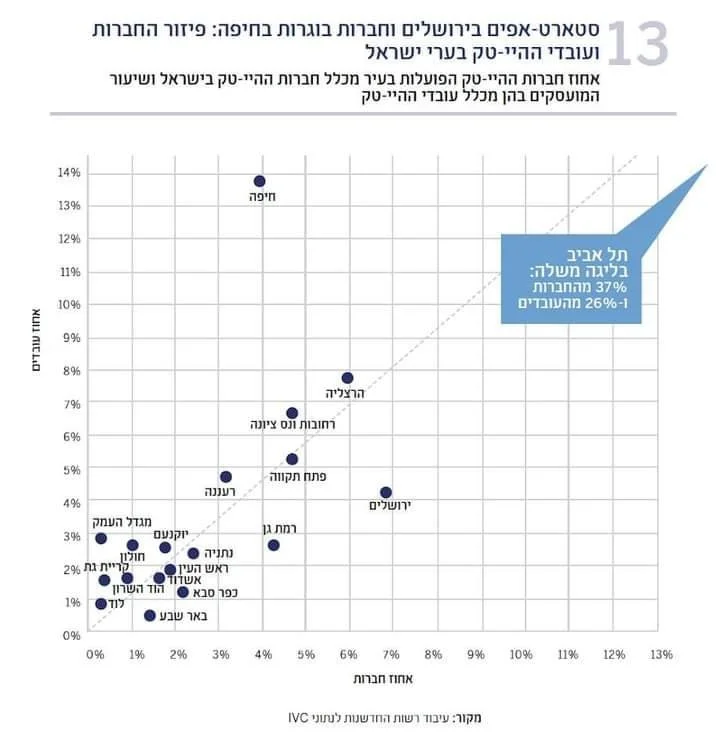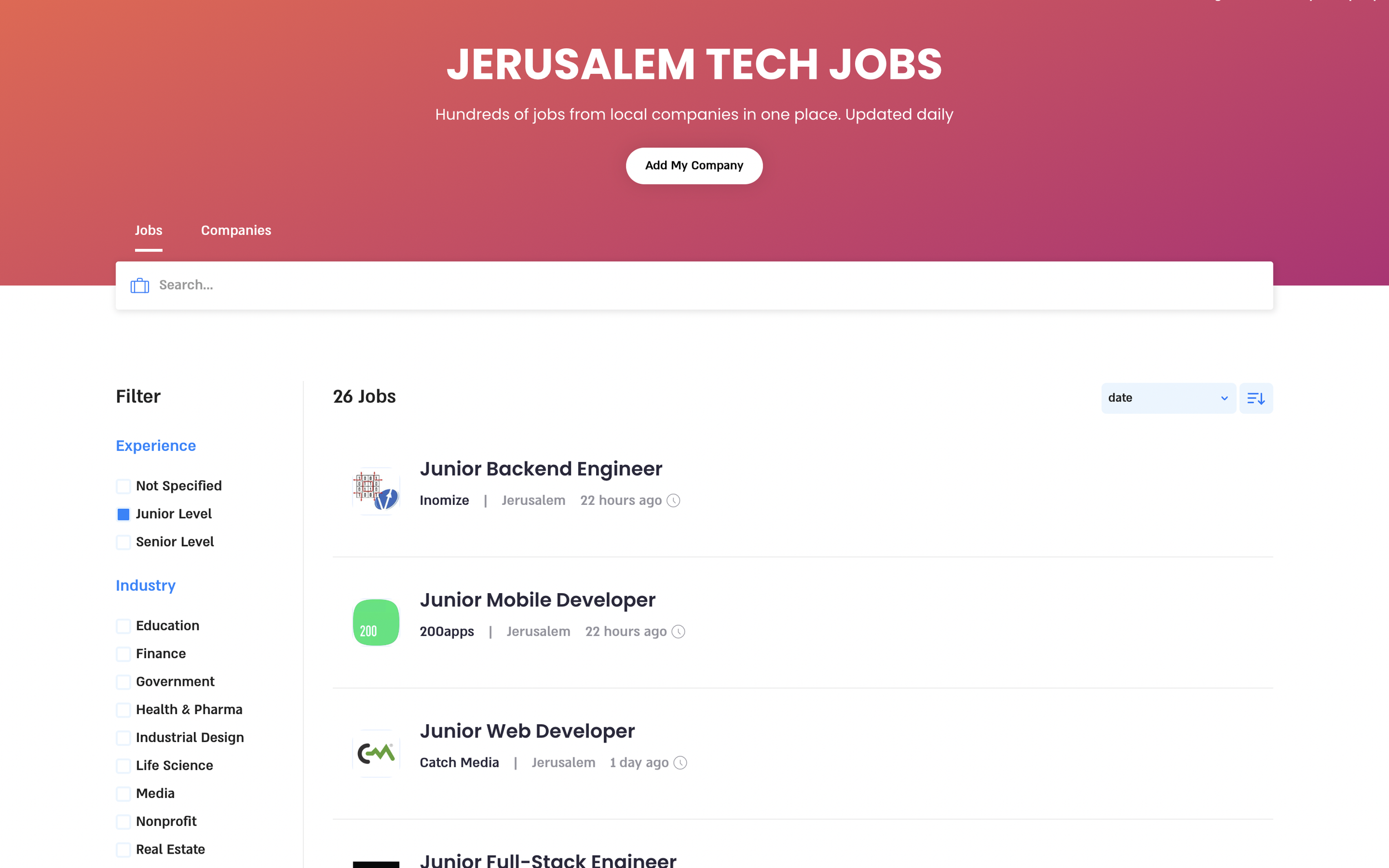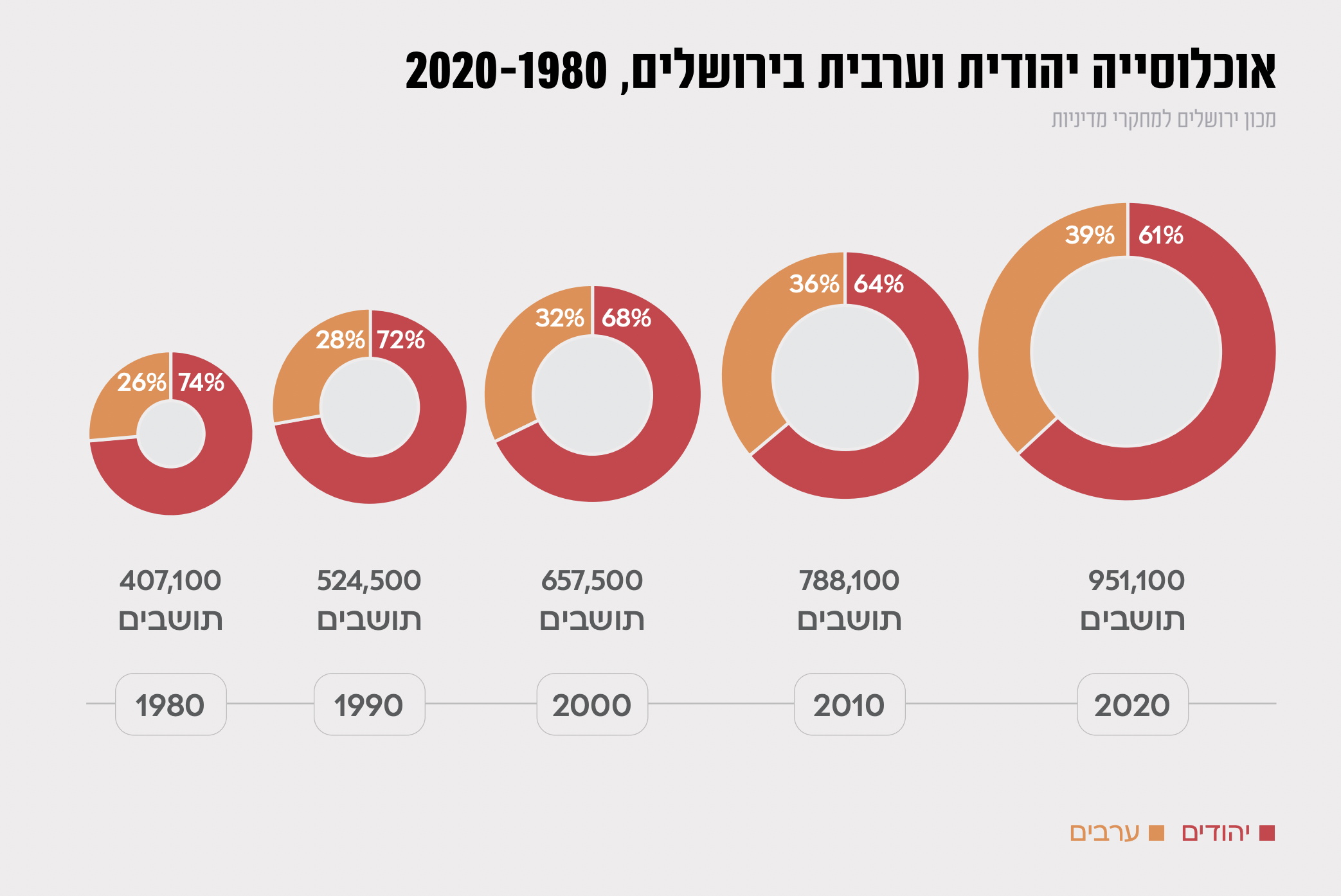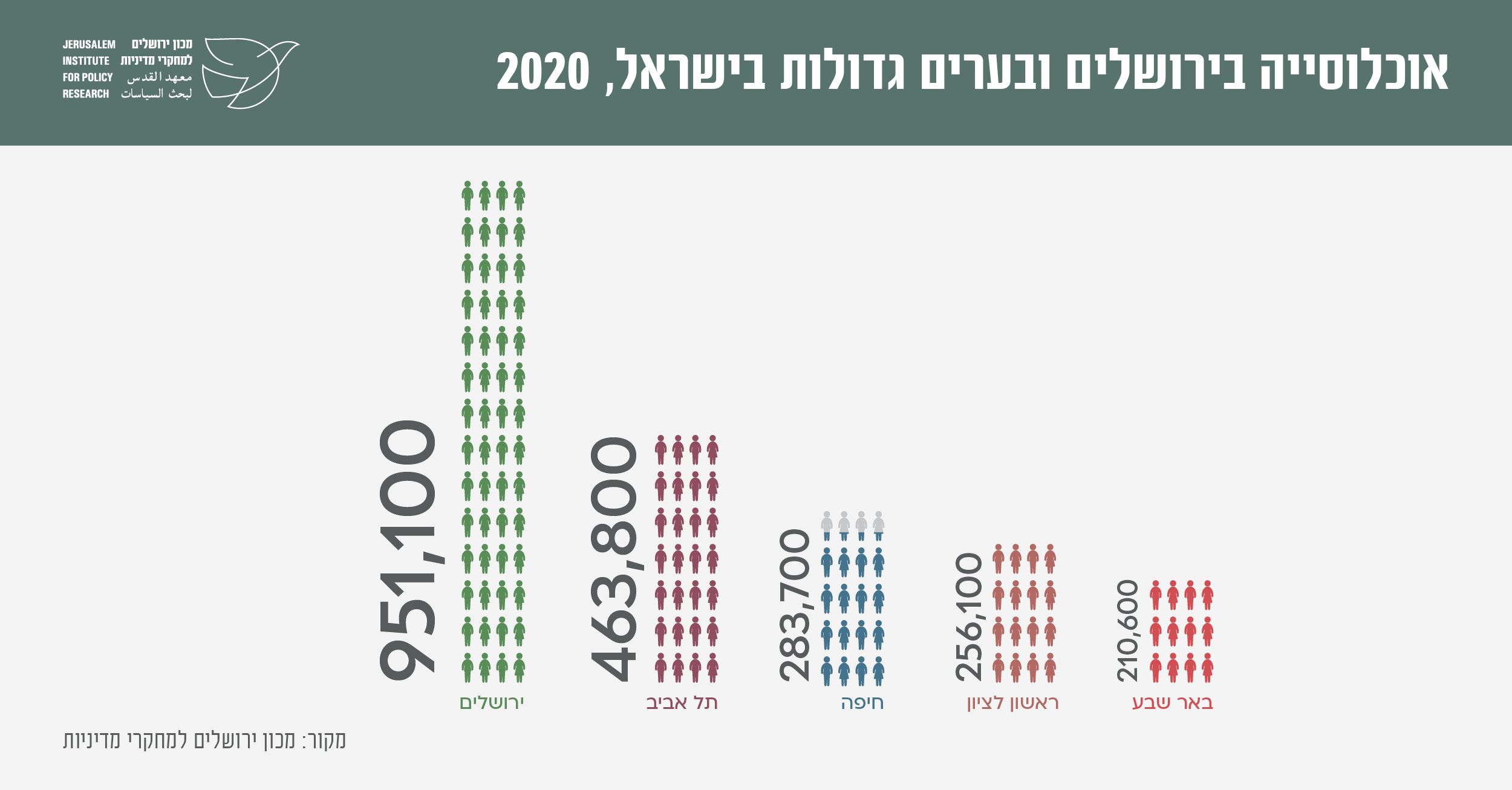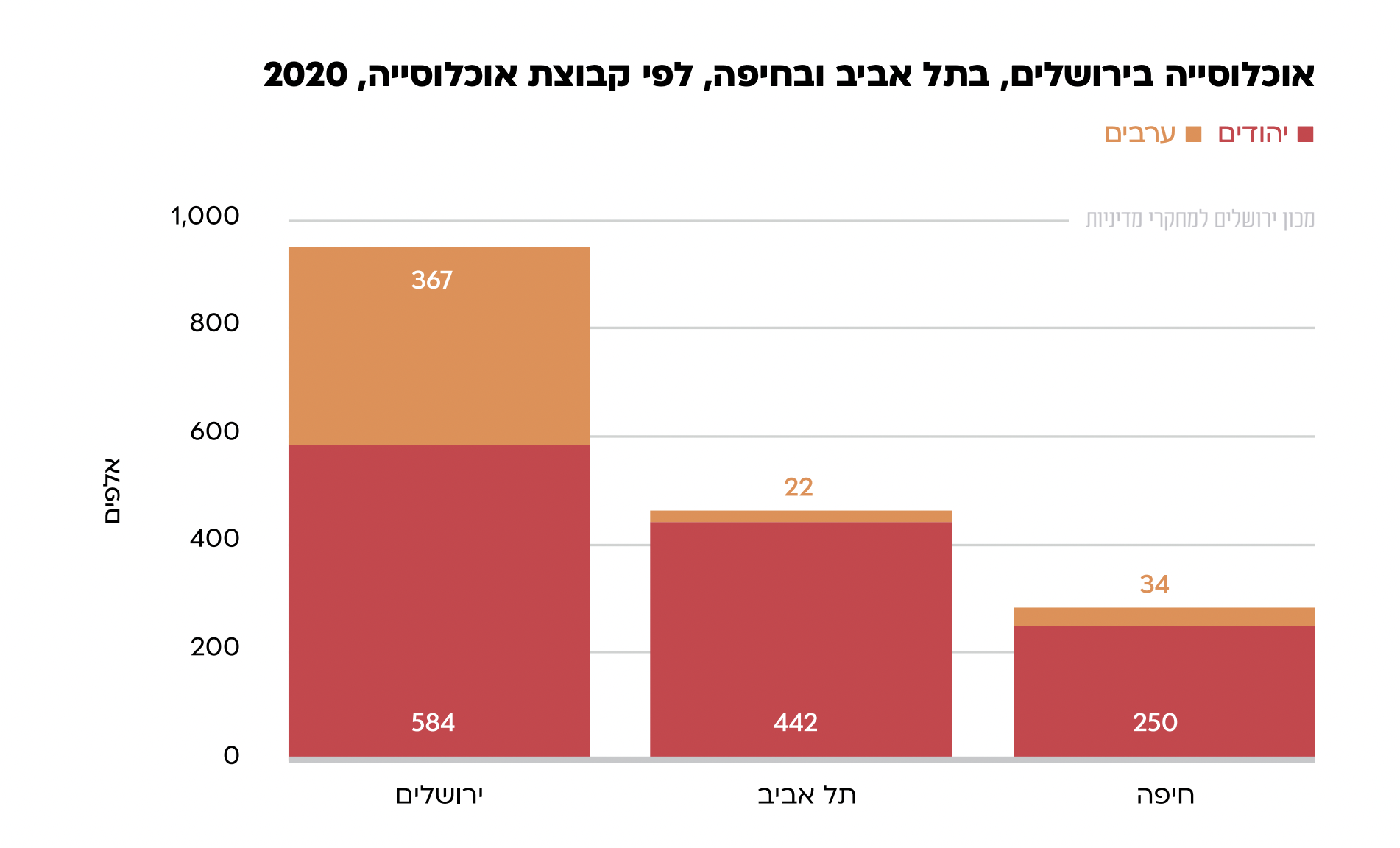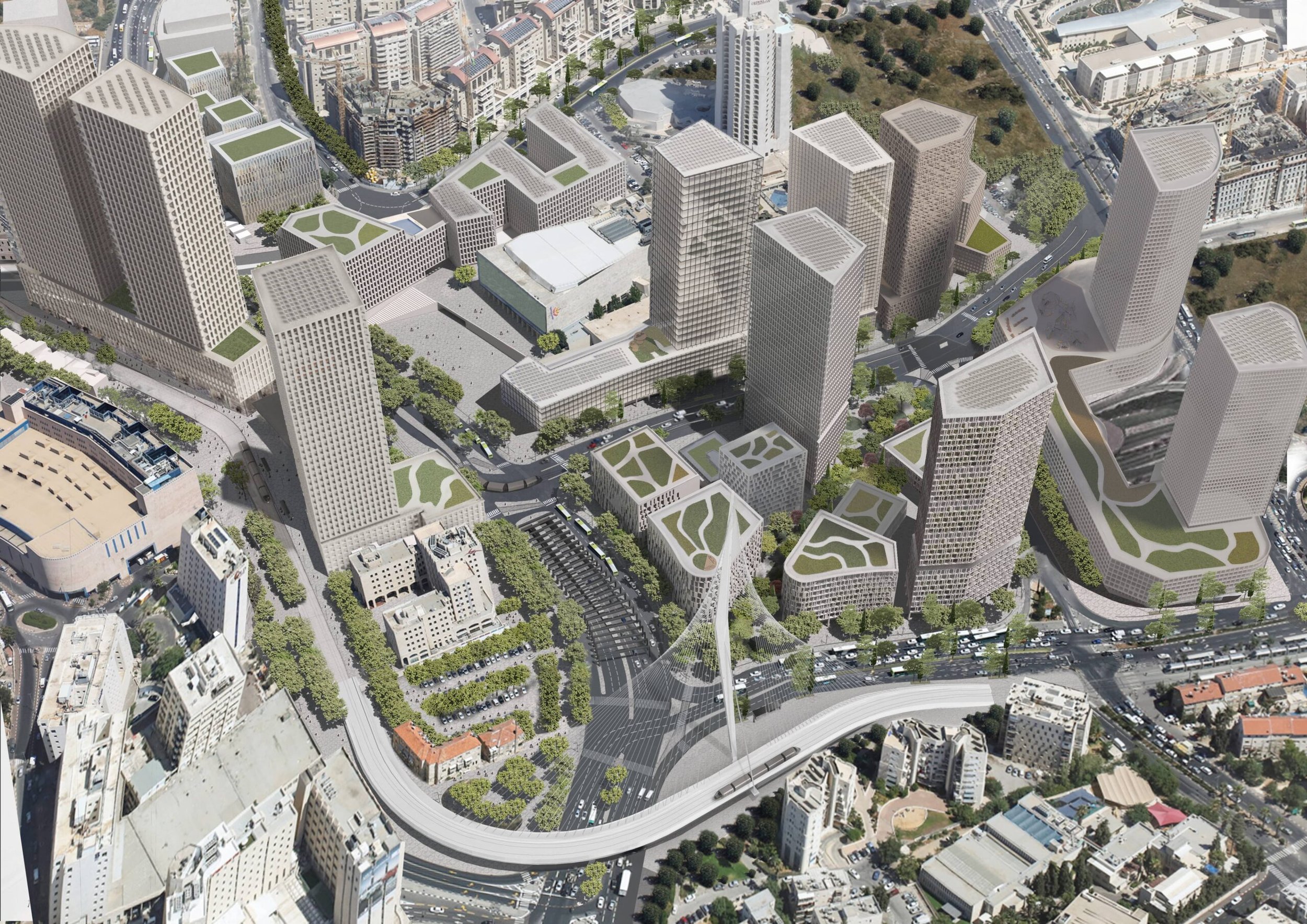
The Jerusalem Thesis
A visual case for why Jerusalem is the future of the Startup Nation
Top 30 Tech City Globally
#2 in Israel for Tech Companies
550 companies, 2x the next big city, Haifa, top 2/3 exits in Israel (Mobileye, NDS).
But Haifa is 3x our employees - Although Jerusalem is 3x larger than Haifa.
Jerusalem is Israel’s true “startup city”: many small companies and missing big companies to grow to its next level.
In Israel, 16% of the working population is in tech. Jerusalem has 331,200 working people.
This doesn’t include tech jobs in non-tech industries (x1.4) and freelancers (guess x1.1-1.2).
Jerusalem can grow from 30,000 to 60,000 tech employees by 2035 with large companies
300:1 Supply Of Junior Talent
10,000 students VS 30 junior jobs (100 yearly)
Before bootcamps and other programs for Haredi, Arab etc.
Enough room for 300 multinationals to grow.
We must solve the Junior problem to keep 99% of students in Jerusalem,
3-5 years later we will have thousands more seniors per year.
Future of Israel’s Talent
Israel is missing 100,000+ talent. Has failed to integrate Haredi & Arab.
Jerusalem is the largest Arab city, and the largest Haredi city in Israel by far.
More Arabs than people in Haifa (367,000).
More Haredim than people in Beer Sheva. (257,000)
80% arab women and 50% haredi men don’t work today.
15% of working population works in tech.
Haredis & Arab both need junior jobs in large companies to grow.
Jerusalem alone has the 100,000 employees Israel is missing.
Fast Train + City Gate + Remote Work = Branches
Saturation in Tel Aviv and salaries skyrocketing.
Companies getting used to having their employees commute
Nobody wants to commute.
Companies are ready to open offices and see what happens.
Apple, Microsoft, Nvidia, Oracle here. Google, Amazon next.
Multinational companies create junior jobs, unlock Arab talent. Acquire startups.
Senior talent is available so more startups grow (with hope of exit)
Country can expand its reach abroad for Olim because of more jobs.
Multinationals drive 2nd wave of growth in Jerusalem’s tech community
The Competitive Case for #1
Both haredis and Arabs don’t and won’t work in Tel Aviv. Jerusalem has to hire them.
Arabs only work in multinational companies with junior jobs (happening in Haifa).
Arab success stories unlock more employees, and startups.
Arab startup investment in Israeli region unlocks the middle east.
Jerusalem will become #1, surpassing Tel Aviv.
Haredi American entrepreneurs open startups in Jerusalem, creating thousands of jobs.
Local english-speaking Haredis start their own company and succeed. Inspire more.
Working Haredi men and Arab women dramatically reduce Jerusalem’s (and country’s) expenses.
Increased income + reduced expenses = profit. Jerusalem and country become rich.

